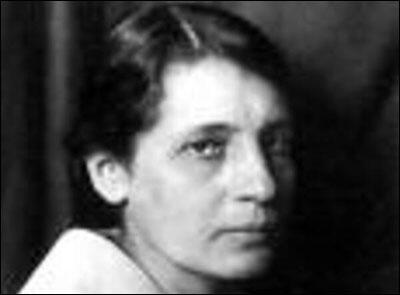On this day on 27th October
On this day in 1832 Eliza Sharples publishes an article calling for the repeal of "taxes on knowledge". Eliza was one of six children born to Ann and Richard Sharples, a manufacturer, in Bolton in 1803. The children received a good education, and Eliza attended boarding-school until she was about twenty.
Sharples held conservative views until she began reading The Republican in 1830. She wrote to its editor, Richard Carlile, and after "a rapid exchange of correspondence in which admiration turned to ardent love, she determined to share his work". Even before he had met Sharples in person, Carlile anticipated that she would become "my daughter, my sister, my friend, my companion, my wife, my sweetheart, my everything".
Richard Carlile published an article in his new newspaper, The Prompter, in support of agricultural labourers campaigning against wage cuts. Carlile's advice to the labourers was "to go on as you have done". This was interpreted by the authorities as a seditious call to arms. Carlile was arrested and charged with seditious libel and appeared at the Old Bailey in January 1831. Carlile argued that "neither in deed, nor in word, nor in idea, did I ever encourage acts of arson or machine breaking".
The court was not convinced by his arguments and Carlile was found guilty of seditious libel and received a sentence of two years' imprisonment and a large fine which he refused to pay, thereby extending the sentence by a further six months. While in prison he continued to write articles for radical newspapers and pamphlets.
In January 1832 Eliza Sharples moved to London and visited Carlile in prison. Carlile had always campaigned for women's rights and he invited her to speak at his Blackfriars Rotunda. Several times a week speakers delivered "attacks on the superstitions of Christianity, which Carlile had now identified as the single most obdurate opposition to reform and liberation". The Rotunda became an important centre for working-class dissent and political reform. Speakers included William Cobbett, Henry 'Orator' Hunt, Robert Owen, Daniel O'Connell, Robert Taylor and John Gale Jones. It is reported that at one meeting calling for parliamentary reform, drew a crowd of over 2,000 people.
Billed as "the first Englishwoman to speak publicly on matters of politics and religion" she gave her first talk on 29th January 1832. The Times reported that she was "pretty, with a good figure and genteel manners" and dressed very well. Sharples pointed out in her speech: "I will set before my sex the example of asserting an equality for them with their present lords and masters, and strive to teach all, yes, all, that the undue submission, which constitutes slavery, is honourable to none; while the mutual submission, which leads to mutual good, is to all alike dignified and honourable.""Cast in the role of the Egyptian goddess Isis, she stood on the stage of the theatre, the floor strewn with whitethorn and laurel, and delivered lectures on mystical religion and women's rights."
Elizabeth Sharples was appointed as editor of a new radical weekly publication, Isis. She gave two lectures every Sunday (at sixpence for the pit and boxes, one shilling for the gallery), on Monday evenings (for half-price). She also gave a free lecture on Friday evenings to accommodate those unable to afford the entry charges.
Not everybody enjoyed her speeches. One man wrote to a national newspaper attacking the idea of a woman speaking in public: "Elizabeth Sharples is a female who exhibits herself in so unfeminine a manner... So utterly illiterate is the poor creature, that she cannot yet read what is set down for her with any degree of intelligibility... with her ignorance and unconquerable brogue... her lecturing is almost as ludicrous as it is painful to witness."
Richard Carlile supported Sharples in her campaign for women's rights: "I do not like the doctrine of women keeping at home, and minding the house and the family. It is as much the proper business of the man as the woman; and the woman, who is so confined, is not the proper companion of the public useful man." Edward Royle adds that "this just about sums up the position of women in the radical movement". Even if a woman was emancipated she was expected to be the "proper companion of the public useful man".
Elizabeth Sharples argued in her newspaper articles that Christianity was the chief barrier to the dissemination of knowledge; by denying the people education, priests were denying man's liberty. She suggested that passive and non-resistance was seen as the "doctrine of priesthood". It is reported that she said "all Reform will be found to be inefficient that does not embrace the Rights of Women".
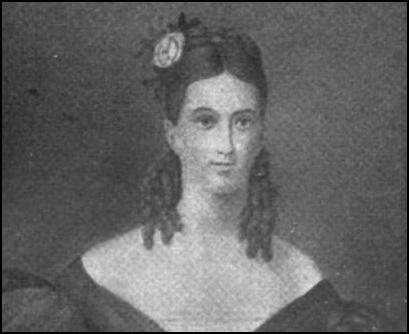
On this day in 1889 Enid Bagnold, the daughter of Colonel Arthur Henry Bagnold, the Commander of the Royal Engineers, was born in Rochester, Kent. Her early childhood was spent in Jamaica but was educated at Prior's Field School in Godalming.
According to Nigel Nicolson she was "a tomboyish, dramatic, outdoor, beautiful girl who soon escaped the conventionally respectable life of her parents by taking a flat in Chelsea". While living in London she studied art under Walter Sickert.
In August 1913, Frank Harris began a magazine entitled, "Modern Society". He employed Enid as a staff writer. She later recalled: "He was an extraordinary man. He had an appetite for great things and could transmit the sense of them. He was more like a great actor than a man of heart. He could simulate anything. While he felt admiration he could act it, and while he acted it, he felt it. And greatness being his big part, he hunted the centuries for it, spotting it in literature, in passion, in action."
In her Autobiography (1917) she admitted that Harris took her virginity. "The great and terrible step was taken... I went through the gateway in an upper room in the Cafe Royal. That afternoon at the end of the session I walked back to Uncle Lexy's at Warrington Crescent, reflecting on my rise. Like a corporal made sergeant.... And what about love - what about the heart? It wasn't involved. I went through this adventure like a boy, in a merry sort of way, without troubling much. I didn't know him. If I had really known him I might have been tender." During dinner with Uncle Lexy she later wrote that she couldn't believe that her skull wasn't chanting aloud: "I'm not a virgin! I'm not a virgin".
Harris introduced her to people like Henri Gaudier-Brzeska, Katherine Mansfield, John Middleton Murry and Claud Lovat Fraser. Gaudier-Brzeska asked her to pose for him. She later recalled: "He didn't want to know what people were like. He rushed at them, held them, poured his thoughts over them, and when in response, they said ten words his impatience overflowed; he jabbed and wounded and the blood flowed."
Bagnold has left an interesting account of what it was like to be sculptured by Gaudier-Brzeska: "I went to his room in Chelsea - a large, bare room at the top of a house - it was winter, and the daylight would not last long. While I sat still, idle and uncomfortable on a wooden chair, Gaudier's thin body faced me, standing in his overall behind the lump of clay, at which he worked with feverish haste. We talked a little, and then fell silent; from time to time, but not very often, his black eyes shot over my face and neck, while his hands flew round the clay. After a time his nose began to bleed, but he made no attempt to stop it; he appeared insensible to it, and the blood fell on to his overall."
On the outbreak of the First World War Bagnold joined the Voluntary Aid Detachments (VADs) and worked as a nurse at the Royal Herbert Hospital, Woolwich. Her account of this experience, Diary Without Dates (1917) was so critical of hospital administration that the military authorities arranged for her dismissal. H. G. Wells described it as one of the most human books written about the war. Determined to help the war effort, Bagnold went to France and worked as a volunteer driver. Later she wrote about this in The Happy Foreigner (1920).
In 1920 Bagnold married Roderick Jones, the head of Reuters News Agency. They moved to North End House, Rottingdean. The writer, Anne Sebba, has argued "Their partnership was marked by loyalty, not fidelity, respect but not passion". The couple had four children. three sons and a daughter. Her friend Vita Sackville-West wrote of her in an unpublished poem: "And then came Jones, and flesh succumbed to Jones and domesticity destroyed you in the end."
Bagnold continued to write and in 1924 published the highly acclaimed novel, The Difficulty of Getting Married. Her biographer, Nigel Nicolson has argued: "Enid Bagnold thus achieved fame while still in her twenties, and her ambition never slackened. Her vitality, humour, audacity, and grace made her an exhilarating companion. She was ebulliently communicative, in talk as in writing, as lavish with words as a pianist is with notes, loving the inexhaustible variety of human experience as much as the language which expressed it."
This was followed by the commercially successful, National Velvet (1935), the story of a butcher's daughter who wins a horse in a raffle and, disguised as a boy, she rides to victory in the Grand National. It was later made into a hugely successful film, with Elizabeth Taylor in the starring role. Her next novel, which she considered to be her best, was The Squire (1938).
Bagnold also wrote several popular plays including Lottie Dundass (1943), The Chalk Garden (1951), The Chinese Prime Minister (1964) and a Matter of Gravity (1975).
Enid Bagnold died of bronchopneumonia on 31st March 1981 at 17a Hamilton Terrace, London. Her ashes were buried at Rottingdean, Sussex, after her cremation at Golders Green.
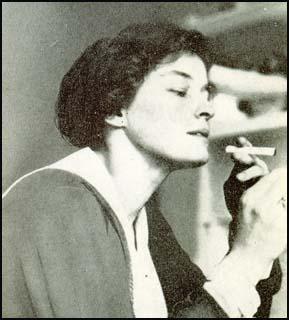
On this day in 1889 Nestor Makhno was born in Hulyai-Pole, Ukraine. In 1906, at the age of seventeen, Makhno joined an anarchist group and became involved in terrorist activities. Two years later he was arrested and sentenced to death but was reprieved because of his youth and imprisoned in Butyrki Prison in Moscow. Makhno was initially placed in irons or in solitary confinement. Later he shared a cell with an older, more experienced anarchist named Peter Arshinov, who had been imprisoned for smuggling arms from Austria. Over the next few years he taught him about the libertarian doctrine that had been developed by Michael Bakunin and Peter Kropotkin.
Makhno was released from prison after the abdication of Tsar Nicholas II. Makhno later recalled: "The February Revolution of 1917 opened the gates of all Russian prisons for political prisoners. There can be no doubt this was mainly brought about by armed workers and peasants taking to the streets, some in their blue smocks, others in grey military overcoats. These revolutionary workers demanded an immediate amnesty as the first conquest of the Revolution.... The tsarist government of Russia, based on the landowning aristocracy, had walled up these political prisoners in damp dungeons with the aim of depriving the labouring classes of their advanced elements and destroying their means of denouncing the iniquities of the regime. Now these workers and peasants, fighters against the aristocracy, again found themselves free. And I was one of them."
Makhno returned to his native village and assumed a leading role in community affairs. In August 1917 he was elected as chairman of the Hulyai-Pole Soviet of Workers' and Peasants. He now recruited a band of armed men and set about expropriating the estates of the neighboring gentry and distributing the land to the peasants. After the Russian Revolution he became one of the leaders in the area.
After the signing of the Treaty of Brest-Litovsk the German Army marched into the Ukraine. His band of partisans was too weak to offer effective resistance and Makhno was forced to go into hiding. He arrived in Moscow in June 1918. Makhno had a meeting with his hero, Peter Kropotkin, who had arrived in Russia from his long-period in exile.
Makhno also had a meeting with Lenin in the Kremlin. Lenin explained his opposition to anarchists. "The majority of anarchists think and write about the future without understanding the present. That is what divides us Communists from them... But I think that you, comrade, have a realistic attitude towards the burning evils of the time. If only one-third of the anarchist-communists were like you, we Communists would be ready, under certain well-known conditions, to join with them in working towards a free organization of producers." Makhno answered that the anarchists were not utopian dreamers but realistic men of action.
Makhno returned to the Ukraine in July 1918. The area was still occupied by Austrian troops that had installed a puppet ruler, Pavlo Skoropadskyi. Makhno launched a series of raids against the government and the manors of the nobility. As Paul Avrich has pointed out: "Previously independent guerrilla bands accepted Makhno's command and rallied behind his black banner. Villagers provided food and fresh horses, enabling the Makhnovists to travel forty or fifty miles a day with little difficulty. Turning up quite suddenly where least expected, they would attack the gentry and military garrisons, then vanish as quickly as they had come. In captured uniforms they infiltrated the enemy's ranks to learn their plans or to open fire at point-blank range. On one occasion, Makhno and his retinue, masquerading as Hetmanite guardsmen, gained entry to a landowner's ball and fell upon the guests in the midst of their festivities. When cornered, the Makhnovists would bury their weapons, make their way singly back to their villages, and take up work in the fields, awaiting a signal to unearth a new cache of arms and spring up again in an unexpected quarter."
Isaac Babel, a political commissar in the Red Army in the Ukraine wrote: "Makhno was as protean as nature herself. Haycarts deployed in battle array take towns, a wedding procession approaching the headquarters of a district executive committee suddenly opens a concentrated fire, a little priest, waving above him the black flag of anarchy, orders the authorities to serve up the bourgeoisie, the proletariat, wine and music."
Victor Serge argued: "Nestor Makhno, boozing, swashbuckling, disorderly and idealistic, proved himself to be a born strategist of unsurpassed ability. The number of soldiers under his command ran at times into several tens of thousands. His arms he took from the enemy. Sometimes his insurgents marched into battle with one rifle for every two or three men: a rifle which, if any soldier fell, would pass at once from his still-dying hands into those of his alive and waiting neighbour."
Nestor Makhno always had a large black flag, the symbol of anarchy, at the head of his army, embroidered with the slogans "Liberty or Death" and "the Land to the Peasants, the Factories to the Workers". Makhno later told Emma Goldman that his objective was to establish a libertarian society in the south that would serve as a model for the whole of Russia. When he set-up his first commune near Pokrovskoye, he named it in honour of Rosa Luxemburg.
In September 1918, after defeating a large force of Austrians at the village of Dibrivki, his men gave him the title, "little father". Two months later the First World War came to an end and all foreign troops left Russia. Pavlo Skoropadskyi was removed from power in an uprising led by Symon Petliura. With the support of the Red Army, Makhno was able to force Petliura into exile.
A pact for joint military action against General Anton Denikin and his White Army was signed in March 1919. However, the Bolsheviks did not trust the anarchists and two months later two Cheka agents sent to assassinate Makhno were caught and executed. Leon Trotsky, commander-in-chief of the Bolsheviks forces, ordered the arrest of Makhno and sent in troops to Hulyai-Pole dissolve the agricultural communes set up by the Makhnovists. With Makhno's power undermined, a few days later, Denikin forces arrived and completed the job, liquidating the local soviets as well.
On 26th September 1919, Makhno launched a successful counterattack at the village of Peregonovka, cutting Denikin's supply lines. This was followed by a new offensive by the Red Army and Denikin's White Army was forced to retreat to the shores of the Black Sea.
Leon Trotsky now turned to dealing with the anarchists and outlawed the Makhnovists. According to the author of Anarchist Portraits (1995): "There ensued eight months of bitter struggle, with losses heavy on both sides. A severe typhus epidemic augmented the toll of victims. Badly outnumbered, Makhno's partisans avoided pitched battles and relied on the guerrilla tactics they had perfected in more than two years of civil war."
A truce was called in October 1920, when General Peter Wrangel and his White Army launched a major offensive in the Ukraine. Trotsky offered to release all anarchists in Russian prison in return for joint military action against Wrangel. However, once the Red Army made sufficient gains to ensure victory in the Civil War, the Makhnovists were once again outlawed. On 25th November, 1920, Makhno's commanders in the Crimea, who had just defeated Wrangel's forces, were seized by the Red Army and executed.
Leon Trotsky now gave orders for an attack on Makhno's headquarters in Hulyai-Pole. Most of his staff were captured and shot but Makhno managed to escape with the remnant of his army. After wandering over the Ukraine for nearly a year, Makhno, suffering from unhealed wounds, crossed the Dniester River into Rumania where he was arrested and interned. He escaped to Poland but was once again arrested and imprisoned in Danzig. Eventually, aided by Alexander Berkman, he was allowed to move to Paris.
Leon Trotsky attempted to explain why he had given orders for Makhno to be assassinated: "Makhno... was a mixture of fanatic and adventurer... Makhno created a cavalry of peasants who supplied their own horses. They were not downtrodden village poor whom the October Revolution first awakened, but the strong and well-fed peasants who were afraid of losing what they had. The anarchist ideas of Makhno (the ignoring of the State, non-recognition of the central power) corresponded to the spirit of the kulak cavalry as nothing else could."
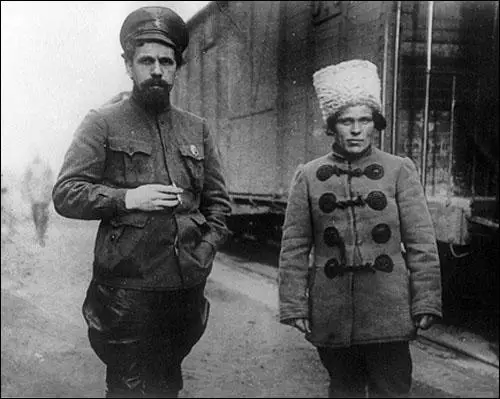
On this day in 1906 Millicent Fawcett of the NUWSS wrote about what she called the "reptile" press. Fawcett, like other members of the NUWSS, feared that the militant actions of the Women's Social and Political Union (WSPU) would alienate potential supporters of women's suffrage. However, Fawcett admired the courage of the suffragettes and was restrained in her criticism of the WSPU. In 1906 she joined with Lilias Ashworth Hallett in organizing the banquet at the Savoy to celebrate the release from Holloway Prison of WSPU prisoners.
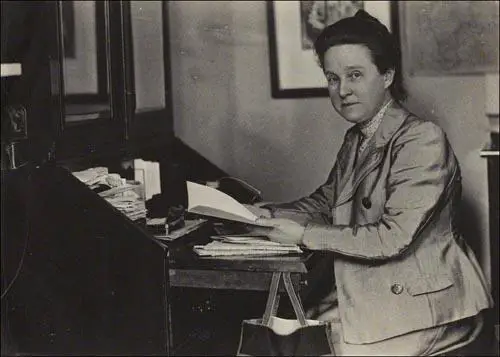
On this day in 1936 Mrs Wallis Simpson obtains her divorce. Her husband, Ernest Simpson, told his friends that he believed that the future King Edward VIII wished to marry his wife. Philip Ziegler has argued: "The precise nature of Mrs Simpson's appeal to the prince of Wales could only be understood by him; probably he hardly understood it himself. It is sufficient to say that by early 1934 the prince had become slavishly dependent on her and was to remain so until he died. The courtiers at first thought that this was just another of his recurrent infatuations, but throughout 1935 they became increasingly alarmed as her role became more prominent and impinged on the performance of his duties."
On 10th December, 1936, Edward VIII signed a document that stated he he had renounced "the throne for myself and my descendants." The following day he made a radio broadcast where he told the nation that he had abdicated because he found he could not "discharge the duties of king as I would wish to do without the help and support of the woman I love." On the night of his abdication, 500 Blackshirts shouting support and giving the Fascist salute gathered outside Buckingham Palace chanting, "We Want Edward". The following day, Oswald Mosley demanded the question of the abdication be put to the British people in a referendum.
In October 1937 the couple decided to visit Nazi Germany. The travel and all the costs of their stay in Germany were paid for from German government funds. Officially, the 12 day trip, was organized by Fritz Wiedemann and Rudolf Hess Later, Princess Stephanie von Hohenlohe claimed that she played a major part in the planning and realisation of the visit. Martha Schad, the author of Hitler's Spy Princess (2004) has argued: "It was billed as a study trip to look at the country's social institutions. But behind this there was another agenda. After the humiliating treatment his wife had received from the British, the duke wanted to show her a country that would extend her a truly royal welcome. The men in power in Berlin expected that in the not too distant future the former king of England would return to the throne under their patronage."
The couple were the official guests of Robert Ley, the head of the German Labour Front. They also met Joseph Goebbels, Joachim von Ribbentrop and Hermann Goering. Goebbels recorded in his diary that he found the Duke of Windsor was a "nice, friendly young man, clearly equipped with sound common sense" and became "really fond of him". He added: "His wife is unassuming, but distinguished and elegant; though without any side, a real lady." On 22nd October, the Windsors visited Adolf Hitler in his mountain-top retreat, the Berghof.
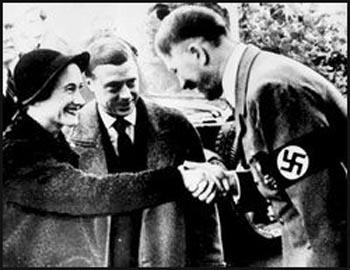
On this day in 1926 H. R. Haldeman, key figure in the Watergate scandal was born. In 1949 Haldeman joined the J. Walter Thompson advertising agency in New York. Later he was promoted to the post of vice president and manager of the California office. Haldeman's father was a financial backer of Richard Nixon. Haldeman got to know Nixon when he was serving as vice president under Dwight D. Eisenhower in 1952. Haldeman helped Nixon in his unsuccessful 1960 campaign against John F. Kennedy. He also managed Nixon's unsuccessful campaign for the governorship of California in 1962.
In the 1968 Presidential Election, he was chief of staff of Nixon's presidential campaign. It has been claimed that Haldeman used his experience in the advertising industry to provide a new, more positive image of Nixon to the public. After Nixon's election he was appointed the president's chief of staff.
On 17th June, 1972, Frank Sturgis, Virgilio Gonzalez, Eugenio Martinez, Bernard L. Barker and James W. McCord were arrested while removing electronic devices from the Democratic Party campaign offices in an apartment block called Watergate. It appeared that the men had been to wiretap the conversations of Larry O'Brien, chairman of the Democratic National Committee.
The phone number of E.Howard Hunt was found in address books of the burglars. Reporters were now able to link the break-in to the White House. Bob Woodward, a reporter working for the Washington Post was told by a friend who was employed by the government, that senior aides of President Richard Nixon, had paid the burglars to obtain information about its political opponents.
In 1972 Nixon was once again selected as the Republican presidential candidate. On 7th November, Nixon easily won the the election with 61 per cent of the popular vote. Soon after the election reports by Bob Woodward and Carl Bernstein of the Washington Post, began to claim that some of Nixon's top officials were involved in organizing the Watergate break-in.
Haldeman was involved in the cover-up from the beginning. In April 1973, Nixon forced Haldeman and John Ehrlichman, to resign. A third adviser, John Dean, refused to go and was sacked. On 20th April, Dean issued a statement making it clear that he was unwilling to be a "scapegoat in the Watergate case". When Dean testified on 25th June, 1973 before the Senate Committee investigating Watergate, he claimed that Richard Nixon participated in the cover-up. He also confirmed that Nixon had tape-recordings of meetings where these issues were discussed.
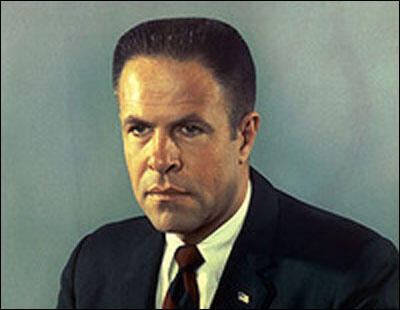
On this day in 1940 Winston Churchill appointed Lord Mountbatten head of Combined Operations Command. He launched a series of commando raids including the disastrous Dieppe Raid in August 1942. The decision by Churchill to promote Mountbatten to vice admiral, lieutenant general and air marshall ahead of older and more experienced men upset senior officers in the military establishment. In October 1943 Churchill appointed Mountbatten as head of the Southeast Asia Command (SEAC). Working closely with General William Slim Mountbatten directed the liberation of Burma and Singapore.
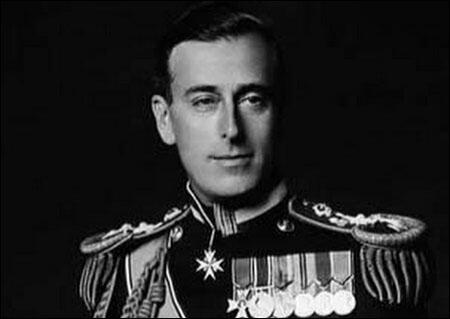
On this day in 1946 Georgi Dimitrov won the general election in Bulgaria. After the occupation of Bulgaria by the Red Army in September 1944, Dimitrov returned to his home land and took over the leadership of the Bulgarian Communist Party. A one-party state was established and Dimitrov was made Premier of Bulgaria on 6th November, 1946.
Dimitrov started negotiating with Josip Tito, the communist leader of Yugoslavia, about the creation of a Federation of the Southern Slavs. The idea eventually resulted in the Bled Accord, signed by Dimitrov and Tito on 1st August 1947. The agreement called for abandoning frontier travel barriers and arranging for a future customs union.
Joseph Stalin did not like the idea of the two communist leaders exerting their independence. It is believed that Stalin sent out agents to kill the two men. Tito sent a note to Stalin that said: "Stalin: stop sending people to kill me. We've already captured five of them, one of them with a bomb and another with a rifle... If you don't stop sending killers, I'll send one to Moscow, and I won't have to send a second."
Georgi Dimitrov died after a short illness on 2nd July, 1949, in a sanatorium near Moscow. Some historians have raised the issue that Dimitrov was poisoned. Simon Sebag Montefiore has pointed out that Stalin arranged for several of his opponents to die while being treated for different medical conditions.
Milovan Djilas has argued: Dimitrov.... belonged to that class of Bulgarians - the best of their race - in whom rebellion and self-confidence fuse in an indestructible essence. He must at least have suspected that the Soviet attack on Yugoslavia would entail the subjugation of Bulgaria, and that the realization of his youthful dream of unification with Serbia would be projected into the misty future, thereby reopening the yawning gulf of Balkan conflicts, and unleashing a tumultuous flood of Balkan claims. Today, after so many years, I still think that even though Dimitrov was ailing and diabetic, he did not die a natural death in the Borvilo clinic outside Moscow. Stalin was wary of self-confident personalities, especially if they were revolutionaries, and he was far more interested in Balkan hatreds than in Balkan reconciliations."
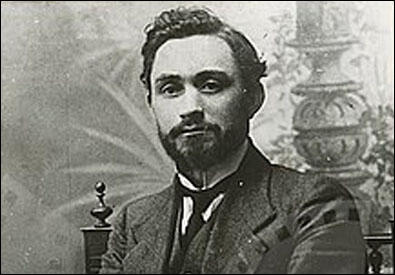
On this day in 1968 Lise Meitner, Austrian physicist died. She studied science at the University of Vienna before moving to Berlin where she joined with Otto Hahn in researching radioactivity at the Kaiser Wilhelm Institute for Chemistry. However, she was refused permission to work in the laboratory because she was a woman.
The First World War brought changes in attitudes towards women scientists and in 1917 m was appointed as head of the Physics Department in the institute. The following year Meitner and Hahn discovered protactinium. Meitner was appointed professor at the Berlin Institute of Theoretical Physics in 1926 and carried out important investigations into the products of neutron bombardment of uranium.
Meitner, like other Jews in Germany, was dismissed from her university post in 1938. She moved to Sweden and in 1939 wrote a paper with Otto Frisch explaining the theory of uranium fission. In the paper they argued that by splitting the atom it was possible to use a few pounds of uranium to create the explosive and destructive power of many thousands of pounds of dynamite. However, unlike other scientists working in this field, Meitner refused to go the United States and work on the Manhattan Project that was attempting to produce the atomic bomb.
